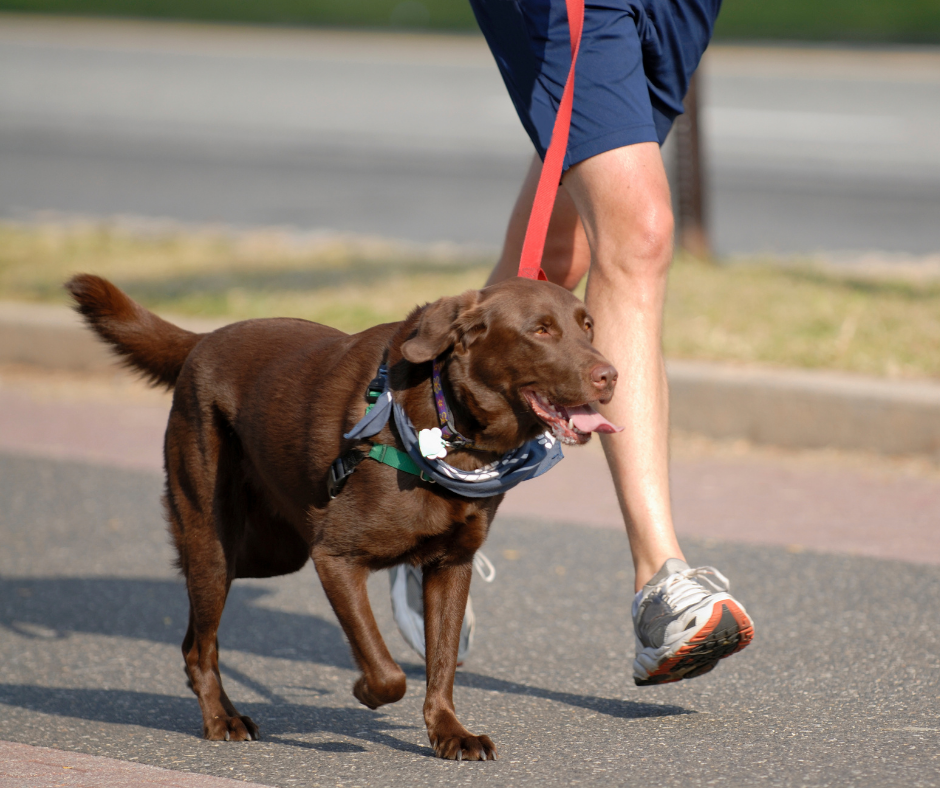Taking your dog for a walk is one of the great pleasures of sharing your life with a pooch, and it’s not only fab for your health and wellbeing, it’s good for your dog’s too. If you have ever wondered how many times to walk a dog each day, or how much to walk your dog, read on for the answers to these questions and more!
How often do dogs need walking?
The simple answer is every day, whatever the weather! Exercise is essential to keep your pooch in tip-top condition, reducing the chances of your four-legged friend piling on the pounds. The benefits aren’t just restricted to their general health though, as going out and about provides your doggo with lots of mental stimulation. Do you have a sniffing machine who stops at every lamp-post or tree stump to check out the latest smells? This is their doggy way of picking up the neighbourhood news. Getting out and about also provides your pooch with opportunities to socialise with their four-legged friends – super important for having a happy hound.
So, do dogs need walking every day? If they are well, with no underlying health conditions, dogs of all breeds should have at least one walk a day, preferably two. If you are in any doubt as to what is best for your pet, consult your veterinary surgeon for advice.

How long to walk a dog for
Maybe your pooch is a bouncing bundle of fun who would walk for hours given the chance, and you’re wondering how much exercise is too much? Or do you share your life with a bit of a doggy couch potato and walks just aren’t their cup of tea? Whatever your pooch’s preference, it is handy to know how long to walk a dog for to keep them in tip-top condition.
As a rough guideline, all healthy dogs need 30–120 minutes of exercise every day, and which end of the scale your pooch is at depends largely on their breed or type:
30 minutes +
Many of the smaller breeds such as:
- Bichon Frise
- Pug
- Yorkshire Terrier
- Miniature Dachshund
- Chihuahua
60 minutes +
- Staffordshire Bull Terrier
- Cocker spaniel
- Westie
- Whippet
120 minutes +
- Border Collie
- Beagle
- Labrador
- German Shepherd
- Husky
- Rottweiler
- Springer Spaniel
How long should I walk a puppy for?
Walking a puppy for too long is best avoided because it can increase the risk of joint disease and arthritis. This is especially true for the bigger breeds who grow at a faster rate than their smaller canine cousins.
A good guideline is to walk a puppy for no more than 5 minutes per month of age twice daily, so as an example, a four-month-old puppy should go out for no longer than twenty minutes. However, the type of exercise is just as important as the length of time. A longer gentle stroll with plenty of sniff breaks is much less likely to cause harm than prolonged periods of high intensity exercise such as ball chasing.
Remember that mental stimulation can be just as tiring as physical exercise, so if your pup has excess energy to burn off, why not try teaching them a new trick or practising their recall?

Dog walking in hot weather
Dogs are at greater risk of heat stroke than us humans for several reasons:
- Sweat glands – they have a very small number of these (mainly on their paw pads), and the glands don’t contribute much to heat loss.
- Coat – their coat provides a layer of insulation, great for keeping warm in the winter but not so good on a sunny day!
- Panting – this is their main means of losing heat and so reducing their body temperature. However, panting is not an efficient way to lose heat when the surrounding environment is very warm.
You may wonder, when is hot weather too hot for walkies? There is no hard and fast rule but if temperatures creep up above 200c, the risk of heat stroke will start to increase. Always check the temperature of the ground too: if you couldn’t stand on the pavement in bare feet then neither should your dog. For more information on keeping your dog cool check out our article.
What about a dog walk in rain?
When rain clouds loom, taking your pooch for a walk may be the last thing on your mind. Most dogs are more than happy to brave a shower for their daily exercise though, so don’t ignore those pleading eyes!
Rain will not harm your dog, but you may find dog walking in wet weather more fun if you are properly equipped. A car seat covering will protect your vehicle from the worst of the muddy paw prints and you may find a towelling coat for your doggo a handy investment for drying them off.
For fair weather pooches that grind to a halt on the doorstep at the merest hint of a downpour, you may have more of a challenge. Getting your pup used to the unpredictable British weather at a young age is always a good idea. For older dogs, plenty of patience and rewards for braving the elements will help.
Is a dog walk after eating OK?
Feeding your dog close to mealtimes is always best avoided because it could potentially increase the risk of bloat (also known as gastric torsion or GDV). Bloat is a life-threatening condition in which the stomach becomes distended and then twists. Deep-chested breeds, such as Great Danes, Labradors and German Shepherds, are at increased risk.
There are several things that are advised to reduce the risk of bloat:
- Allow at least 2 hours after feeding before exercising your dog
- Wait 30 minutes after a walk before feeding your dog
- Avoid large meals – feeding twice a day may be better than once
- Use slow feeding bowls to prevent your dog ‘scoffing’ their food
Volunteer to dog walk
No dog of your own? No problem! You could always offer to walk a neighbour’s dog. Alternatively, your local dog shelter may be on the look out for volunteer dog walkers, or why not get in touch with an organisation such as the Cinnamon Trust.
Head on over to Vital Pet Club for more great info! Why not sign up to our newsletter for pet advice, prizes and more?


